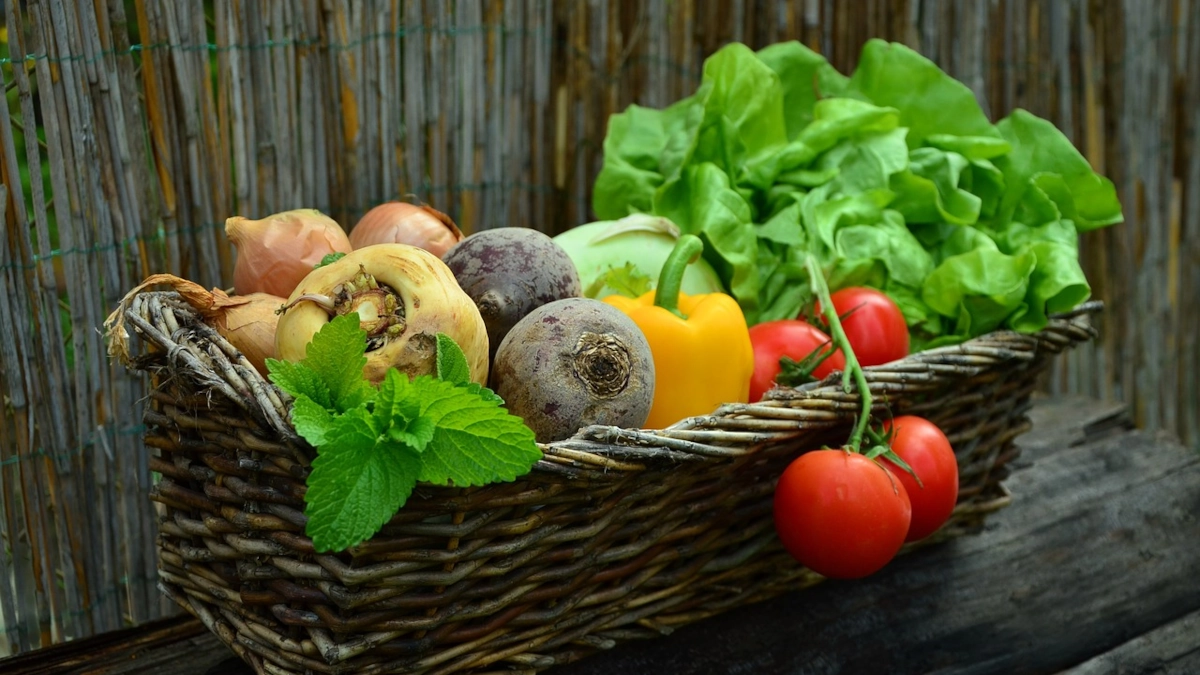Last Updated on March 10, 2023 by hgspaces
Homegrown organic produce
In recent years, there has been a growing trend towards organic produce, and for good reason. Organic produce is grown without the use of harmful chemicals, pesticides, and fertilizers, which can be harmful to both our health and the environment. However, not all organic produce is created equal. Eating homegrown organic produce is the best option, and here’s why.
Your Freshest Option
First and foremost, homegrown organic produce is the freshest option available. When you grow your own fruits and vegetables, you have complete control over when they are harvested. This means that you can pick them at the peak of ripeness, ensuring that they are packed full of nutrients and bursting with flavor. In contrast, store-bought produce is often picked before it is fully ripe so that it can survive the journey to the grocery store. This means that it is often lacking in flavor and nutrients, and may have traveled long distances, resulting in a larger carbon footprint.
You know what is in it
Furthermore, when you grow your own produce, you know exactly what has gone into it. You have control over the type of soil, water, and fertilizers that are used, ensuring that your produce is free from harmful chemicals and pesticides. This is particularly important for those who are concerned about the long-term effects of exposure to these chemicals, as many pesticides have been linked to a variety of health problems, including cancer, reproductive disorders, and neurological conditions.
Support local agriculture
In addition, eating homegrown organic produce is a great way to support local agriculture and reduce your carbon footprint. When you buy produce from a grocery store, it often has to travel long distances to get to you. This transportation adds to the carbon emissions that contribute to climate change. However, when you grow your own produce, you eliminate the need for transportation, reducing your carbon footprint and supporting local agriculture.
Save Money
Another benefit of homegrown organic produce is that it can save you money in the long run. While there may be some initial costs associated with setting up a garden, such as buying seeds, tools, and soil, these costs are often offset by the savings that come from not having to buy produce from the grocery store. In addition, homegrown organic produce is often more abundant than store-bought produce, so you can preserve the excess through canning, freezing, or dehydrating, ensuring that you have a supply of fresh produce year-round.
Have a healthier lifestyle
Eating homegrown organic produce also encourages a healthier lifestyle. When you have a garden, you are more likely to spend time outdoors, getting fresh air, and exercising. This can have a positive impact on your mental health and well-being, as well as your physical health. Additionally, when you grow your own produce, you are more likely to eat a wider variety of fruits and vegetables, as you will be growing what you like to eat and experimenting with new varieties.
It’s fun and rewarding
Lastly, growing your own produce is a fun and rewarding experience. There is something incredibly satisfying about watching a tiny seedling grow into a full-grown plant and then harvesting the fruits of your labor. It is a great way to connect with nature and feel a sense of accomplishment. Additionally, it can be a fun activity to do with family and friends, creating a sense of community and shared experience.
Using a greenhouse is another great option to consider for growing organic produce. Greenhouses provide year-round growing opportunities, protect plants from pests and extreme weather, and can allow for a wider variety of plants to be grown. Additionally, they can help reduce the need for harmful chemicals and pesticides. Whether you are a seasoned gardener or a beginner, a greenhouse can help you take your organic gardening to the next level.
In conclusion, eating homegrown organic produce is the best option for a variety of reasons. It is the freshest, healthiest, and most sustainable option available, and it can save you money in the long run. It is also a fun and rewarding experience that can encourage a healthier lifestyle and support local agriculture. So why not try growing your own produce today? Your taste buds, wallet, and the environment will thank you.
Find out more about how you can add a beautiful new greenhouse to your garden by clicking here.
